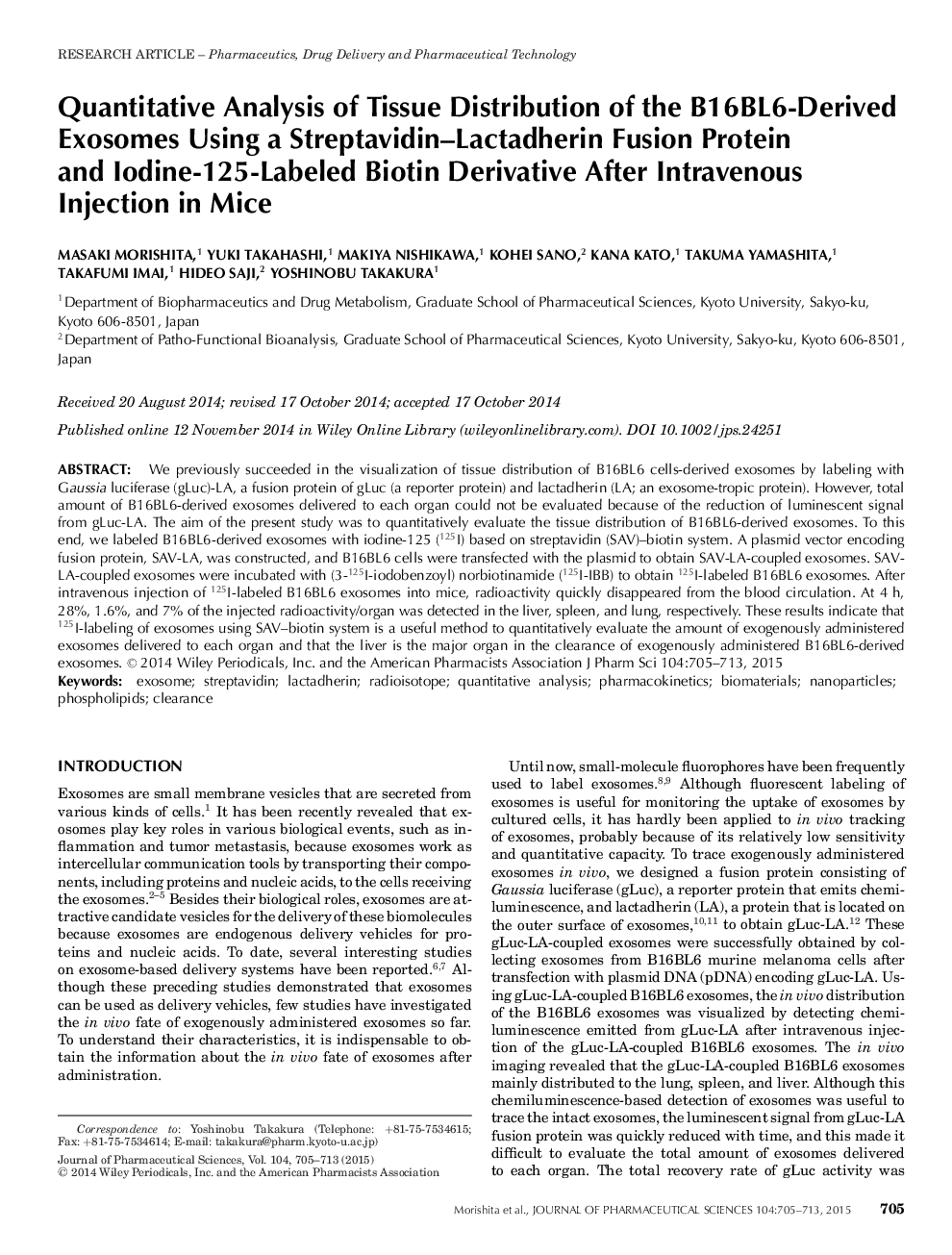| Article ID | Journal | Published Year | Pages | File Type |
|---|---|---|---|---|
| 10162193 | Journal of Pharmaceutical Sciences | 2015 | 9 Pages |
Abstract
We previously succeeded in the visualization of tissue distribution of B16BL6 cells-derived exosomes by labeling with Gaussia luciferase (gLuc)-LA, a fusion protein of gLuc (a reporter protein) and lactadherin (LA; an exosome-tropic protein). However, total amount of B16BL6-derived exosomes delivered to each organ could not be evaluated because of the reduction of luminescent signal from gLuc-LA. The aim of the present study was to quantitatively evaluate the tissue distribution of B16BL6-derived exosomes. To this end, we labeled B16BL6-derived exosomes with iodine-125 (125I) based on streptavidin (SAV)-biotin system. A plasmid vector encoding fusion protein, SAV-LA, was constructed, and B16BL6 cells were transfected with the plasmid to obtain SAV-LA-coupled exosomes. SAV-LA-coupled exosomes were incubated with (3-125I-iodobenzoyl) norbiotinamide (125I-IBB) to obtain 1251-labeled B16BL6 exosomes. After intravenous injection of 125I-labeled B16BL6 exosomes into mice, radioactivity quickly disappeared from the blood circulation. At 4Â h, 28%, 1.6%, and 7% of the injected radioactivity/organ was detected in the liver, spleen, and lung, respectively. These results indicate that 125 I-labeling of exosomes using SAV-biotin system is a useful method to quantitatively evaluate the amount of exogenously administered exosomes delivered to each organ and that the liver is the major organ in the clearance of exogenously administered B16BL6-derived exosomes.
Keywords
Related Topics
Health Sciences
Pharmacology, Toxicology and Pharmaceutical Science
Drug Discovery
Authors
Masaki Morishita, Yuki Takahashi, Makiya Nishikawa, Kohei Sano, Kana Kato, Takuma Yamashita, Takafumi Imai, Hideo Saji, Yoshinobu Takakura,
